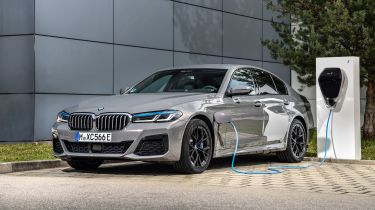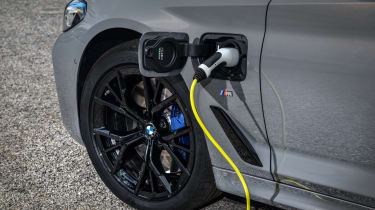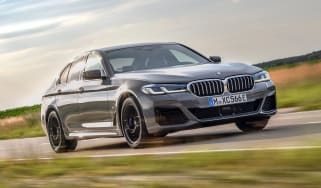BMW 5 Series hybrid - MPG, running costs & CO2 (2019-2024)
The BMW 5 Series PHEVs can use virtually no fuel if you have a short commute, and have a low BiK benefit for company-car drivers
BMW’s plug-in hybrid 5-Series models boast impressive claimed fuel consumption figures, but company-car users will make more of a saving on tax than private buyers will on petrol.
BMW 530e MPG & CO2
While the conventionally powered BMW 530i with a 2.0-litre petrol engine returns up to 38.2mpg, the addition of an electric motor and battery pack sees the 530e claim between 156 and 201mpg according to official WLTP figures. Like most plug-in hybrids, whether you can obtain a similar figure will depend on how you drive the car, and how often you recharge the batteries.
With an electric range of up to 37 miles (33 miles for the xDrive model) from a full charge, someone with a typical round trip to work could theoretically use no fuel at all. Drive further, with fewer top-ups of the battery, and the economy will drop. Charging takes less than five hours from a domestic socket, or under three hours if you have a 3.7kW BMW i Wallbox fitted at home and charge from 0-80%.
What won’t change is the car’s low emissions figures of just 31-41g/km, which means the BMW 530e qualifies for a low BiK band for company-car drivers, potentially saving thousands of pounds compared to a diesel or petrol model. These low emissions figures mean every version of the 5 Series plug-in hybrid is exempt from the London Congestion Charge under the ‘cleaner vehicle discount’ until at least 25 October 2021.
More reviews
After the first year's CO2-based road tax (generally included in the on-the-road price), the BMW 5 Series hybrid will cost the discounted VED rate each year to tax. However, a list price of more than £40,000 means it’s liable for the additional surcharge in years two to six.
BMW 545e xDrive MPG & CO2
The significantly more powerful six-cylinder car does come with an efficiency penalty, as you’d expect. The WLTP fuel consumption figure ranges from 117 to 166mpg, while the electric-only range is a more meagre 33 miles.
The 545e xDrive has an 11.6 kWh battery, so the charging times are similar to those for the 530e.
CO2 figures of 38-54g/km put the 545e xDrive into a similarly low Benefit-in-Kind tax bracket as the 530e, and the same road tax and congestion charge parameters also apply.
Insurance
The 530e has been classified in insurance group 36. This is higher than the petrol 530i’s group 33 but lower than the six-cylinder diesel 530d’s group 41. By comparison, the plug-in hybrid Mercedes E 300 e and E 300 de are rated in insurance groups 41-44. A group 43 rating means higher premiums for the 545e xDrive, thanks to its greater performance and cost.
Servicing
Every BMW uses sensors to determine when servicing is necessary, so maintenance is based on condition rather than time or mileage. BMW servicing isn’t the cheapest, but BMW offers servicing packages that will make it easier to budget for regular mileage.
Warranty
Every BMW has a three-year/unlimited-mileage warranty, which is identical to the policy that Mercedes provides. BMW's plug-in hybrid models have an additional warranty for their high-voltage lithium-ion battery, running for six years or 100,000 miles. During that warranty period, BMW says it’ll replace a battery that has dropped to below 70% of its original operating performance.














